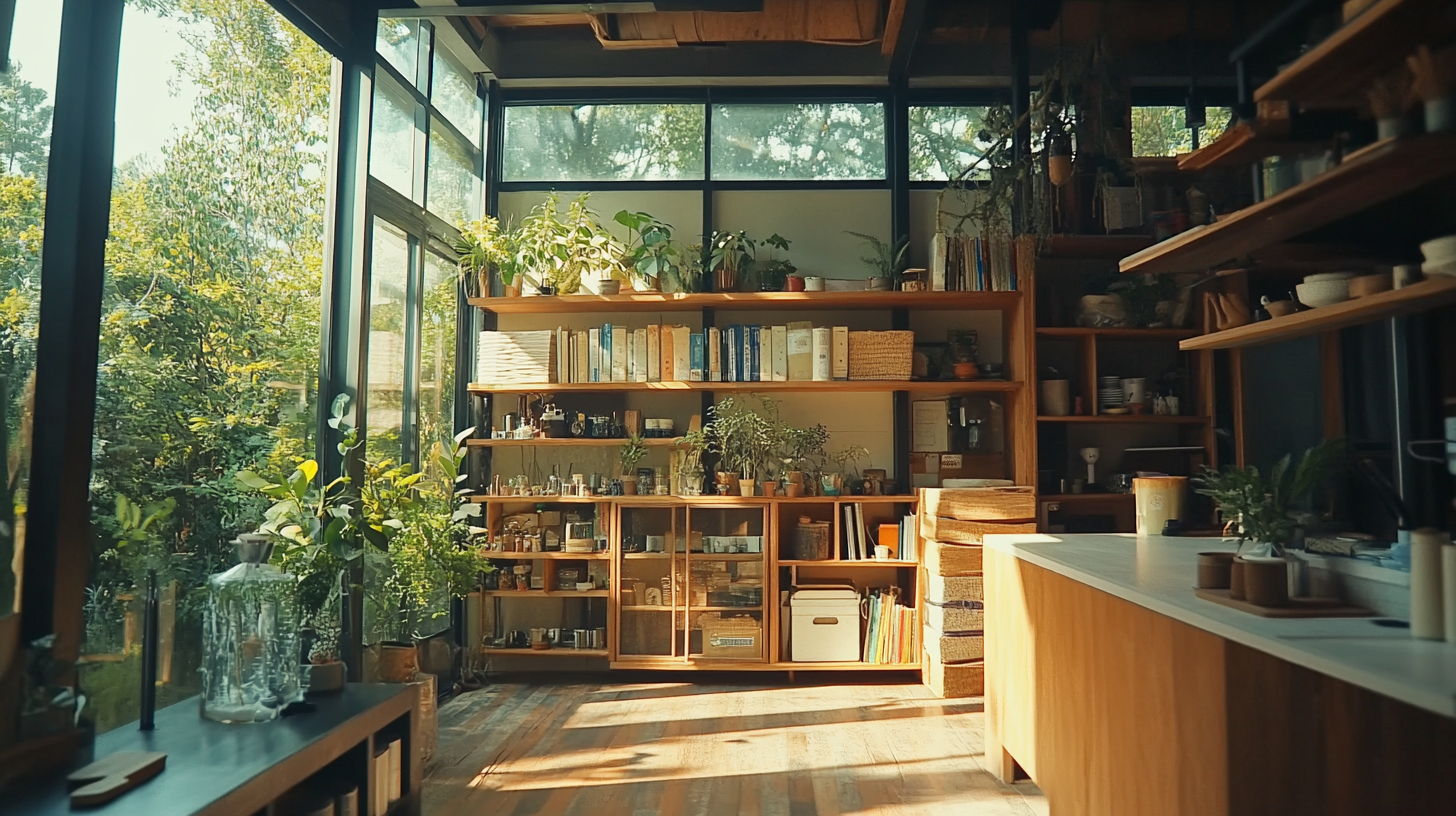Natural beauty for your favorite space
Exploring the Advantages of the Most Eco-Conscious Construction Materials
As the global community becomes increasingly aware of the pressing issues surrounding climate change, the construction industry stands at a critical juncture. A report from the World Green Building Council highlights that buildings account for nearly 40% of global energy-related carbon dioxide emissions. This staggering figure underscores the necessity for adopting sustainable practices within the construction sector. Among these practices, the selection of the most environmentally friendly building materials is pivotal in reducing the carbon footprint and promoting sustainability.
Innovations in eco-conscious materials, such as recycled steel, reclaimed wood, and bio-based composites, are revolutionizing the way we approach construction. According to a study by McGraw Hill Construction, 47% of architects reported that they actively include green building materials in their projects, citing both environmental benefits and economic savings over time. By exploring the advantages of these materials, we can better understand how to create structures that not only meet the demands of modern society but also protect our planet for future generations. The transition to the most environmentally friendly building materials represents not just a trend, but a necessary evolution in the construction landscape.

Understanding Eco-Conscious Construction Materials and Their Benefits
The construction industry is undergoing a significant transformation with the increasing adoption of eco-conscious materials. These materials not only reduce the environmental impact of building projects but also offer beneficial attributes that enhance the overall quality and sustainability of structures. According to a report by the World Green Building Council, buildings contribute to approximately 39% of global carbon emissions, with materials accounting for a substantial portion of that figure. By utilizing eco-conscious materials, such as bamboo, recycled steel, and hempcrete, the industry can significantly lower its carbon footprint. One of the key benefits of eco-conscious construction materials is their role in improving energy efficiency. For instance, natural insulation materials like sheep's wool and cellulose can outperform conventional insulation in reducing heat loss. A study published by the National Renewable Energy Laboratory indicates that using eco-friendly materials can decrease energy consumption in buildings by up to 50%. This shift not only leads to lower utility costs for homeowners and businesses but also curtails greenhouse gas emissions, contributing to a more sustainable future. Another significant advantage is the health benefits associated with using non-toxic materials. Traditional construction materials often contain harmful volatile organic compounds (VOCs) that can adversely affect indoor air quality. Research by the U.S. Environmental Protection Agency shows that poor indoor air quality can lead to respiratory issues and other health problems. By opting for eco-conscious materials, such as low-VOC paints and finishes, builders can enhance the living and working environments for occupants, promoting overall well-being and productivity. Ultimately, the move towards eco-conscious construction materials presents an opportunity for the industry to embrace sustainability while providing long-term economic savings and healthier building environments. With ongoing advancements and a growing body of research supporting their benefits, it is clear that eco-friendly materials are not just a trend, but a crucial step towards a more sustainable construction future.

Key Properties That Make Construction Materials Eco-Friendly
When it comes to choosing construction materials, eco-friendliness is increasingly becoming a priority for builders and homeowners alike. There are several key properties that define what makes a construction material eco-friendly. First and foremost, sustainability is crucial. Materials that are renewable, biodegradable, or recycled contribute to a lower ecological footprint. For example, bamboo and reclaimed wood are excellent options as they promote sustainable harvesting practices and reduce waste.
Another important property is energy efficiency. Eco-friendly materials often have superior thermal insulation properties, which help reduce energy consumption for heating and cooling. Materials like straw bales or insulating concrete forms not only minimize energy use but also help maintain a comfortable indoor environment. Moreover, the life cycle of a building material should be considered. Materials that require less energy to produce or can be reused or repurposed at the end of their life are essential for long-term sustainability.
Lastly, the impact on indoor air quality cannot be overlooked. Eco-friendly materials often contain low or zero volatile organic compounds (VOCs), which are harmful to both health and the environment. Using non-toxic paints, finishes, and adhesives ensures a healthier living space without compromising on quality or durability. By focusing on these key properties, builders can make informed choices that contribute to a greener future in construction.

Comparative Analysis of Eco-Conscious vs. Traditional Construction Materials
When it comes to construction, the choice of materials can significantly impact both the environment and the overall sustainability of a project. Eco-conscious construction materials are gaining traction as a viable alternative to traditional options, prompting a comparative analysis of their benefits. Unlike conventional materials, which often involve extensive resource extraction and processing, eco-friendly options prioritize renewable resources, such as reclaimed wood, bamboo, and recycled metals. These materials not only minimize the carbon footprint but also reduce the demand for new raw materials, thereby preserving natural ecosystems.
In addition to being environmentally responsible, eco-conscious materials often boast superior durability and energy efficiency. For instance, insulated concrete forms and sustainably sourced timber can provide better thermal performance than traditional masonry or steel. This increased efficiency not only leads to lower energy costs but also reduces the long-term environmental impact of heating and cooling in buildings. Furthermore, many eco-friendly materials are non-toxic, contributing to healthier indoor air quality while safeguarding construction workers from harmful substances often found in traditional materials.
The initial investment in eco-conscious materials may be higher, but their long-term benefits cannot be overlooked. While traditional construction materials may seem economically advantageous in the short run, the cumulative costs associated with energy consumption and maintenance can outweigh the upfront savings. Eco-conscious materials, although sometimes more costly initially, tend to offer greater value over a building's lifecycle, highlighting the need for a shift in perspective toward sustainable practices in construction.

Innovative Techniques in Sustainable Construction Practices
In recent years, innovative techniques in sustainable construction have gained momentum, promising to reshape the industry. One of the most groundbreaking advancements is the 3D concrete printing method developed by experts at the University of Virginia. This novel approach not only enhances efficiency and reduces waste but also offers a versatile solution for creating eco-friendly structures. By minimizing the need for traditional materials and labor, this technique allows for a more sustainable construction process that aligns with the growing demand for environmentally-conscious building practices.
Additionally, the impact of green construction procurement is crucial in achieving sustainable economic growth. Incorporating green procurement strategies within construction projects can significantly enhance logistics services and foster innovation in building practices. By prioritizing sustainable materials and methods, the industry can support not only ecological benefits but also drive economic improvement through the development of new technologies and processes. This synergy between procurement and construction practices highlights a pathway to a more sustainable future, where the construction sector plays a pivotal role in environmental stewardship.
Moreover, adapting green building practices in developing countries is another critical aspect of advancing sustainability. Integrating smart technology and innovative materials can offer immense benefits in regions facing environmental and economic challenges. As these countries invest in sustainable construction methods, they can create resilient infrastructure that meets both immediate needs and long-term ecological goals. The exploration of these techniques represents a significant step toward a holistic approach in constructing the buildings of tomorrow, emphasizing sustainability at every stage.
Case Studies: Successful Projects Utilizing Eco-Friendly Materials
In recent years, the construction industry has made significant strides in adopting eco-friendly materials, directly impacting environmental sustainability. Numerous case studies highlight successful projects that not only prioritize ecological integrity but also demonstrate the viability of these innovative materials. For instance, the Bullitt Center in Seattle, often referred to as the "greenest commercial building in the world," utilizes reclaimed wood and sustainably sourced materials, achieving a remarkable 89% reduction in carbon footprint when compared to conventional buildings.
Another notable example is the Bosco Verticale in Milan, an architectural marvel featuring vertical forests comprised of over 9,000 trees and various plants. This project not only enhances urban biodiversity but also contributes to improved air quality and energy efficiency, showcasing how integrating nature into building designs can yield substantial environmental benefits. According to a report by the World Green Building Council, buildings that incorporate eco-friendly materials can lead to resource efficiency improvements of up to 30%, significantly reducing overall operational costs.
Moreover, the use of recycled materials in construction is gaining momentum. The New York City High Line, a repurposed elevated railway turned urban park, illustrates how salvaged steel and reclaimed wood can transform derelict spaces into thriving community hubs. This project has reportedly increased property values in the surrounding areas by over 20%, reflecting a growing appreciation for eco-conscious design. As more leaders in the industry embrace these practices, the shift towards eco-friendly materials exemplifies a promising trend towards sustainable construction that addresses both environmental and economic concerns.

